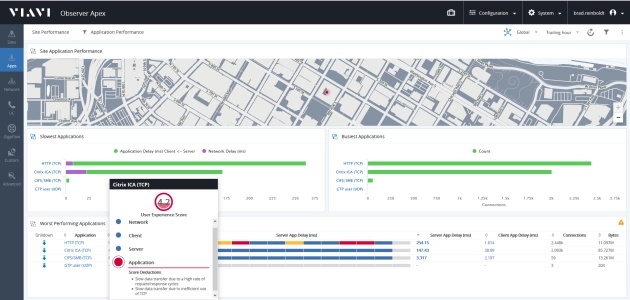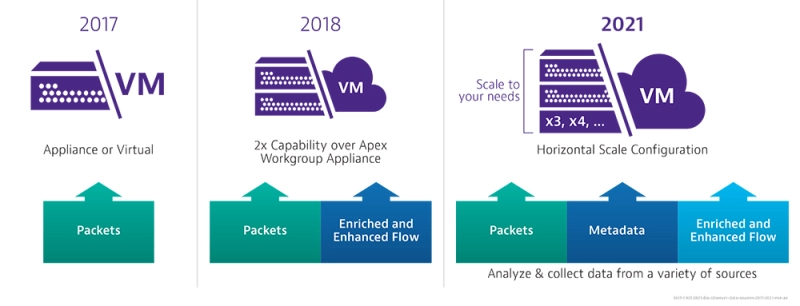Look, if you've been in network ops for more than five minutes, you know the drill. Something breaks, users lose their shit, and you're left staring at a dozen different monitoring tools that all show different colored graphs but none tell you what actually went wrong. "High CPU" alerts when the problem is packet loss. "Network Latency" alerts when it's actually DNS timing out. The usual bullshit. VIAVI Observer is different - it captures every damn packet and gives you the forensic evidence you need to figure out what happened.
The 2025 reality is "IT data overload" - IoT devices, hybrid cloud traffic, and remote work have created a mountain of network data that's impossible to manually analyze. Observer cuts through this chaos by treating packets as the "ultimate source of network truth" and using machine learning to highlight what actually matters instead of drowning you in more dashboards.
VIAVI has been in the network test and measurement game since forever, and their Observer platform documentation actually makes sense compared to most vendor docs.
The Three Things Observer Does That Actually Matter
Observer hits you with three types of data: full packet capture, metadata analysis, and enriched flow records. Here's why that matters: when someone says "the network is slow," you can actually prove whether it's the network, the server, the client, or just Steve in accounting torrenting movies again.

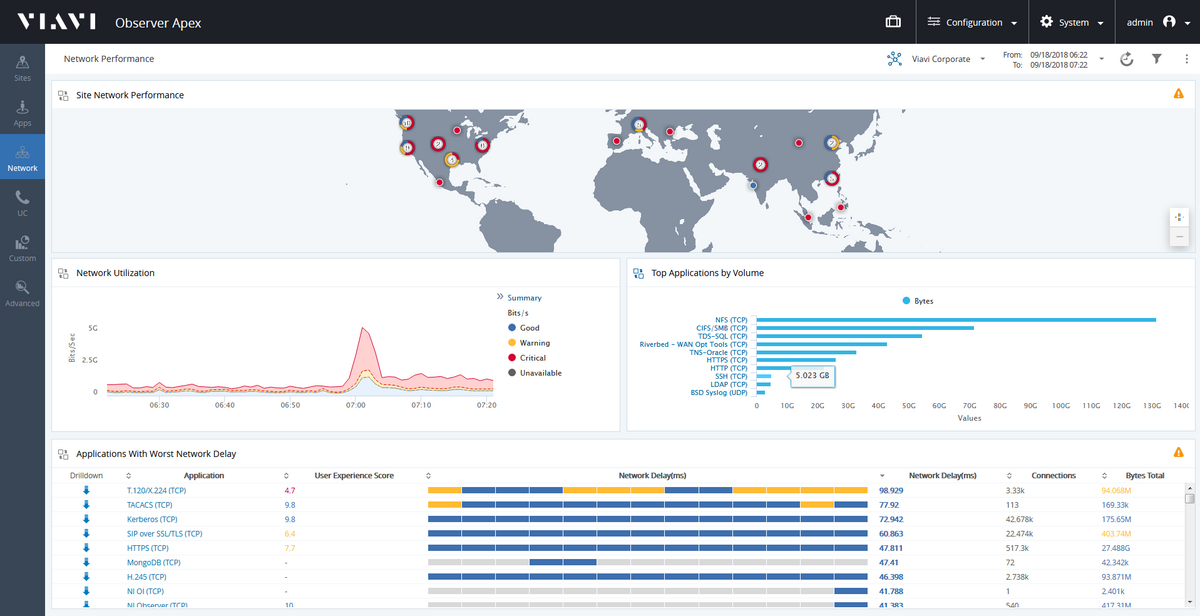
The killer feature is the end-user experience scoring. Every transaction gets a score from 0-10. When your CEO's email is slow and she's breathing down your neck, you can pull up the exact transaction and see it scored a 2.3 because of packet loss on hop 7. No more guessing, no more "it works fine for me."
The Components (And What They're Actually Good For)
Observer Apex is the brain of the operation. It's where you'll spend most of your time when things are on fire. Fair warning: the learning curve is brutal. Took our team about 8 weeks to get productive, and that's with VIAVI's training programs.
Fair warning: The Apex 17.5 upgrade broke our custom reports - specifically anything using the legacy API calls. VIAVI's migration scripts don't handle custom dashboards properly, and you'll spend a weekend rebuilding them. Any custom reports you built in earlier versions will probably break during major upgrades - learned this the hard way when 17.5 came out and half our dashboards just showed blank charts. The Observer Apex datasheet has all the technical specs if you need to justify hardware requirements, but they don't mention the upgrade gotchas or the new licensing headaches.
Observer GigaStor is your packet capture workhorse. This thing will eat storage for breakfast - we're talking 2-5TB per day per gigabit of traffic. Budget accordingly or prepare for very angry conversations with your storage admin.
Here's a fun one: GigaStor appliances can be temperamental under heavy load. We've seen memory issues that require periodic reboots - budget for maintenance windows or your storage admin will hate you. The 5GB+ RAM requirements aren't just marketing fluff, these things will choke and die if you skimp on memory.

Observer GigaFlow takes your boring NetFlow data and actually makes it useful. Instead of just seeing "traffic from A to B," you get device types, application details, and user context. It's like NetFlow that actually grew up and got a real job.
Here's a current gotcha: Recent GigaFlow versions moved away from Oracle Java due to licensing concerns. The upgrade won't remove the old Oracle JRE automatically, so you'll have leftover Java installations cluttering your system. If other apps depend on Oracle Java, you're stuck managing multiple Java runtimes like it's 2005 again. VIAVI provides removal instructions, but good luck explaining to your security team why you have three different Java versions installed.
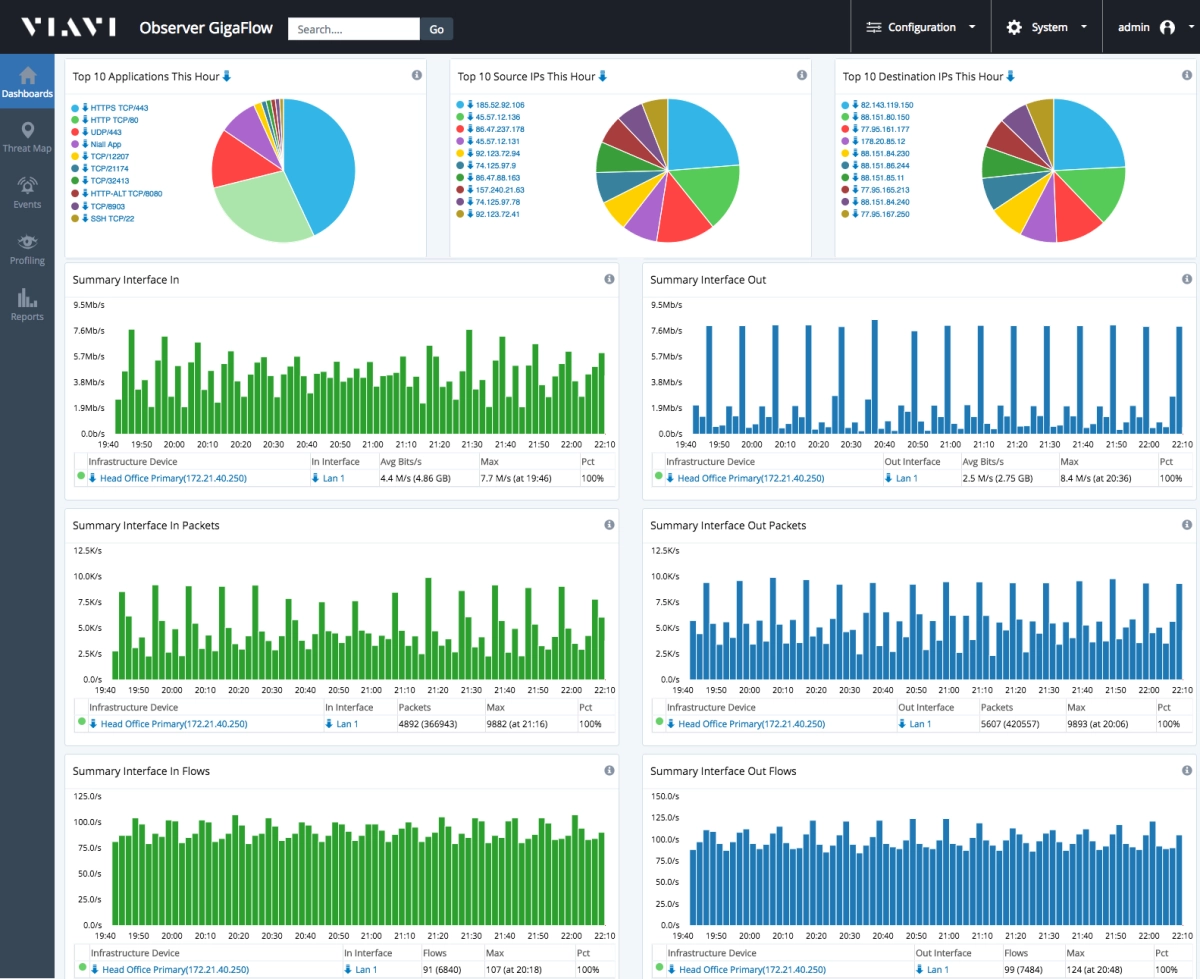
Observer Analyzer is purpose-built for VoIP troubleshooting. If you support unified communications, this will save your sanity. It shows you exactly where call quality degrades and why. No more playing "guess which hop is causing the jitter."
Deployment Reality Check
Observer comes in three flavors: hardware appliances, AWS AMI, and virtualized software. The hardware is solid but expensive. The cloud deployment works great until you see your AWS bill from all the packet capture storage. Budget 3x what VIAVI's sales team estimates for storage costs. Check out the Observer cloud monitoring guide for deployment architecture details.
The ObserverONE appliance is their "all-in-one" box. It's perfect for smaller environments that want the full Observer experience without buying separate components. Just remember: "all-in-one" also means "single point of failure" if you don't plan for redundancy. The ObserverONE specification sheet covers technical requirements if you need to size it properly.
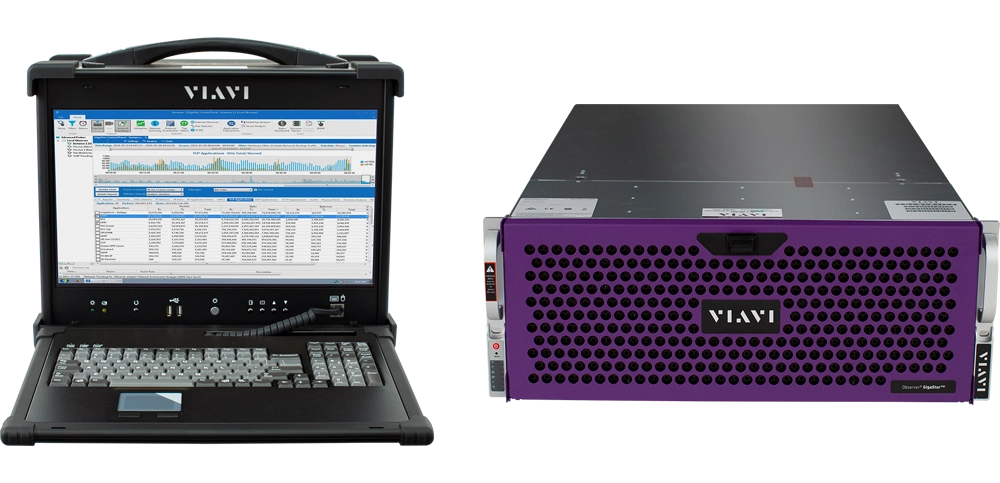
Pro tip: Start with a limited deployment scope. Observer generates insane amounts of data, and your first month will be a learning experience in storage management. One deployment I worked on hit massive storage issues - I think it was like 40-50TB in a few weeks because someone enabled full capture on way too much traffic. Storage team was ready to murder us, and it took down the SAN for hours.
Windows deployments are especially fun - Observer's packet driver conflicts with anything that touches raw sockets. You'll get "DRIVER_IRQL_NOT_LESS_OR_EQUAL" blue screens if you're running any network security software. I think it was CrowdStrike that caused the worst conflicts, but honestly it could've been any of the half dozen security agents we had installed. Turn off everything, deploy Observer, then slowly turn things back on while praying to whatever deity handles driver conflicts. Took us three tries to get it stable.
Current OS support is limited to Windows 10 and Windows Server 2016 (64-bit only), with Windows 10 support ending October 2025. If you're still running Windows 8.1 or Server 2012 R2, you're shit out of luck - support ended in 2023. The upcoming Windows 11 migration is going to be interesting since VIAVI hasn't officially blessed it yet. Read the deployment best practices guide and check out the Observer user forum for real-world deployment stories from other engineers who've been through this pain.
Anyway, you're probably wondering how this compares to the other overpriced monitoring tools out there. Spoiler alert: it's expensive as hell, but if you need deep packet forensics, there's really no alternative.


